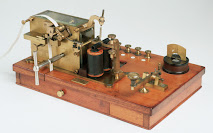The Columbia Broadcast System, also known as CBS, would not be where it is today without some of its long lasting journalistic heroes. Edward Murrow. Walter Cronkite. Dan Rather. Katie Couric. Scott Pelley.
But none of these would be where they are today if it was not for Don Hewitt.
Hewitt was born in New York City, New York, on Dec. 14, 1922. He attended New York University for one year before dropping out and starting work as a copy boy for the New York Herald Tribune.
After a while, he worked for the Associated Press in Memphis before transitioning to CBS News in 1948. At the time, CBS was mainly just radio broadcasting, but was starting to make the transition to television. Hewitt was put in charge of some of the company's television operations.
He looked up to the famous Edward Murrow, but while he looked up to Murrow, he knew he wanted to do his own thing.
Hewitt directed the network's first television newscast on May 3, 1948 that featured Douglas Edwards. Hewitt appreciated and valued the journalistic side of things, but his passion was for the production such as the lights and cameras. That is where he made some of his biggest contributions.
Hewitt made many of these long lasting changes after becoming the executive producer of "CBS Evening News with Walter Cronkite."
The first was changing the show's duration from 15 minutes to 30 minutes, which is still common today for national and local news broadcasts. This provides more of an ability for news to go into households creating a more informed public.He is also credited for being the first to put text on the bottom half of the screen, which are now commonly called supers or lower thirds. These are usually used to show a person's name, title or location.
Additionally, he had the idea to use cue cards for anchors (a term he came up with) as an early version of a teleprompter.
Another new method he designed and utilized was using film "doubles" and multiple cameras for news productions. This is used today so a viewer does not get bored from looking at a single talking head.
Hewitt is also known as being the first to televise political events and discourse starting in 1960. During that year, he directed the first televised presidential debate between Richard Nixon and John Kennedy for all three networks. It is believed the debate being televised hurt Nixon because of his appearance that lead to Kennedy's victory.But all of this does not even account for his proudest accomplishment.
After being forced out of his role as executive producer for "CBS Evening News with Walter Cronkite" by Fred Friendly, Hewitt moved onto a different project. One that he said would be modeled as a television version of Life magazine.
"60 Minutes" was born.
The show started in 1968, and "60 Minutes" is still shown every Sunday night on CBS. The idea is to have long form visual stories that covers both hard and soft news in the same broadcast. The show has remained successful and popular throughout its entire tenure. It has won Peabody and Emmy awards while consistently being in Nielsen's top 10.
The show is known for and is likable because of its in-depth reporting and hard hitting questions. Many well-respected reporters have had stints on the program such as Mike Wallace, Dan Rather, Ed Bradley, Lesley Stahl, Scott Pelley and Anderson Cooper.Hewitt stayed in charge of "60 Minutes" until 2004 and afterwards he was a consultant for CBS until 2007. On August 19, 2009, Hewitt died at 86.
Hewitt was fundamental in changing how we take in our news and raised our expectations for the quality of content and production that we receive, but he opened a can of worms when it comes to news broadcasting. His changes led to the cable news boom that spread and promoted false information, which then influenced the social media news age.
Either way, we can deem Don Hewitt to be a true trailblazer and pioneer when discussing the evolution of television news broadcasting.








































